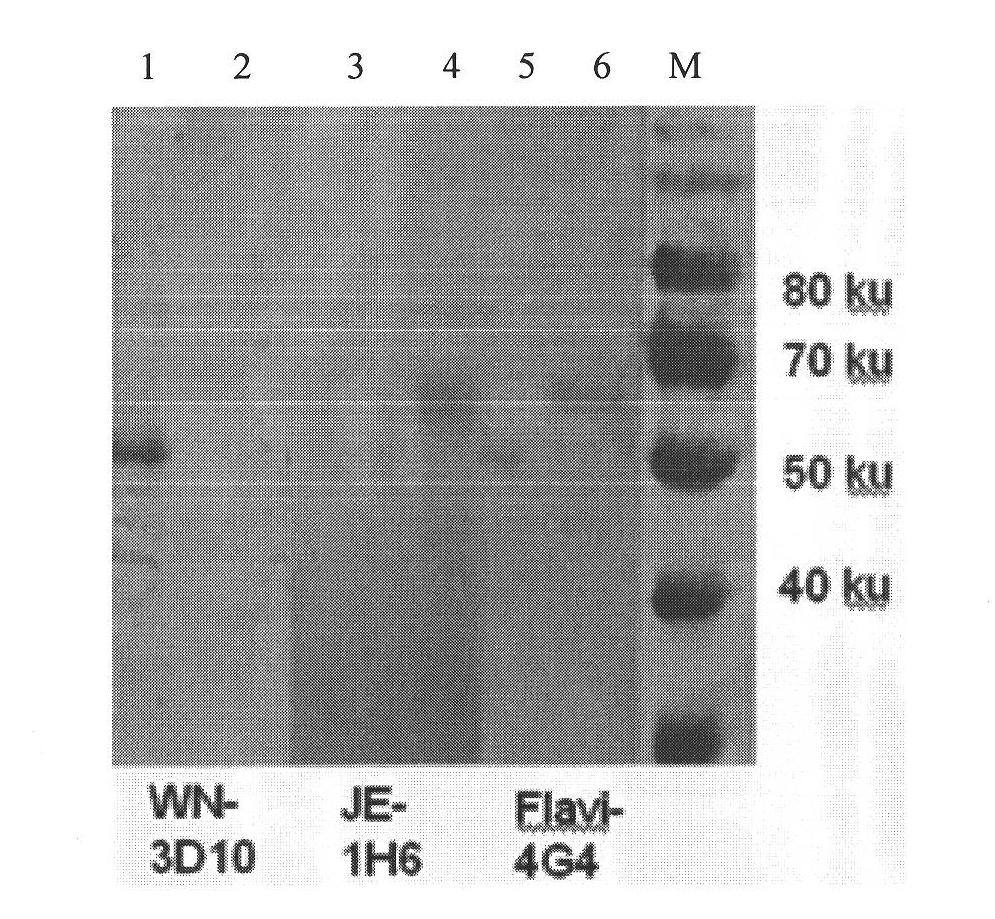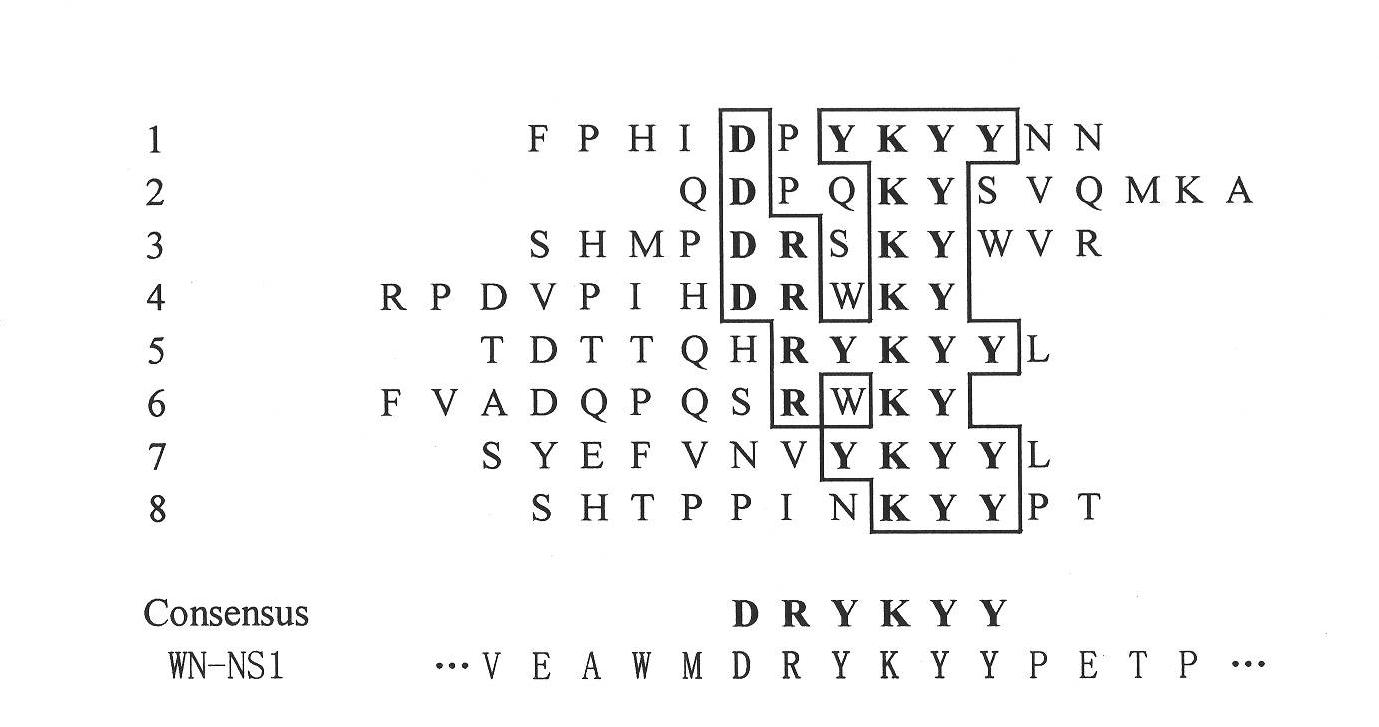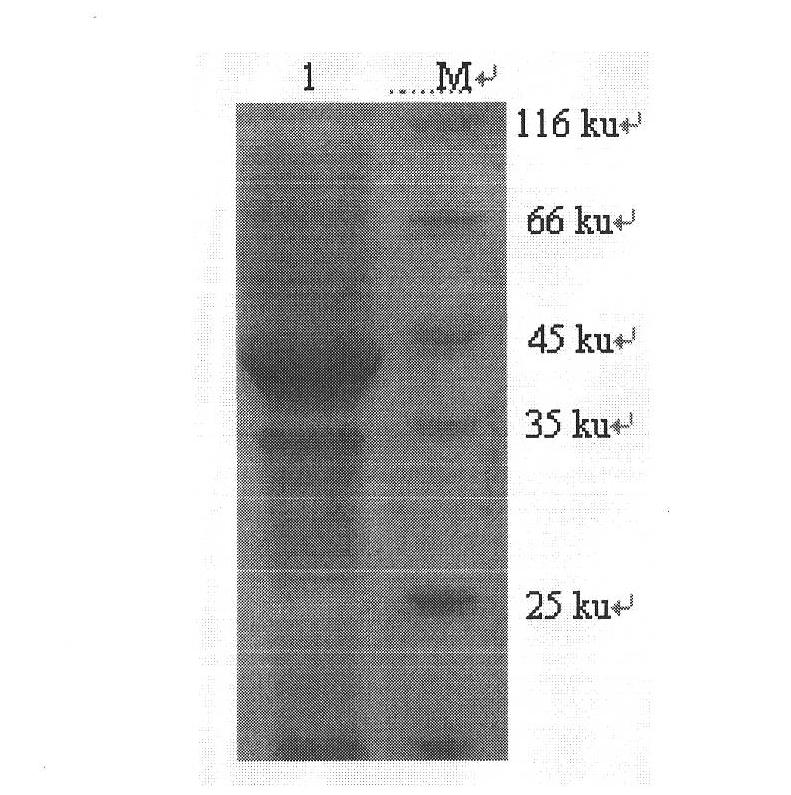West nile virus NS1 protein monoclonal antibody, identified B cell epitope thereof and application
A West Nile virus and monoclonal antibody technology, applied in the direction of antibodies, antiviral agents, anti-animal/human immunoglobulin, etc., can solve the problem that antibodies cannot be used for differential diagnosis of viruses
- Summary
- Abstract
- Description
- Claims
- Application Information
AI Technical Summary
Problems solved by technology
Method used
Image
Examples
Embodiment 1
[0029] Example 1 Preparation of Monoclonal Antibody
[0030] 1. Mice Immunization
[0031] Immunize five 6-week-old female BALB / c mice with the purified prokaryotic recombinant NS1 protein, and immunize 3 times in total, with an interval of two weeks between each immunization. Firstly, mix the recombinant NS1 protein with an equal volume of Freund's complete adjuvant Emulsification, second immunization and third immunization The recombinant NS1 protein was mixed and emulsified with an equal volume of Freund's incomplete adjuvant, the immunization dose was 50 μg / rat, and the immunization route was intraperitoneal immunization.
[0032] One week after the second immunization and the third immunization, blood was collected from the tail of the mice, and the serum was separated (4°C, 10,000 rpm, 20 min), and the antibody level was detected by indirect ELISA. Three days before cell fusion, booster immunization was performed on BALB / c mice with good immune effect, and each mouse wa...
Embodiment 2
[0039] Example 2 Identification of monoclonal antibodies
[0040] 1. Subclass identification of monoclonal antibodies
[0041] Subclass identification of the monoclonal antibody obtained in Example 1 was carried out according to the operating instructions of the SBA ClonotypingTM System / HRP Antibody Subclass Identification Kit.
[0042] The results show that the heavy chain of the monoclonal antibody WN-3D10 of the present invention is IgG 1 , the light chain is a κ chain.
[0043] 2. Western blot test
[0044] The WNV-NS1 protein and JEV-NS1 protein were subjected to SDS-PAGE electrophoresis and then electrotransferred. The electrotransfer condition was 18V for 30min. The transferred nitrocellulose membrane was blocked overnight at 4°C in PBS blocking solution containing 50 g / L skimmed milk powder; the blocked nitrocellulose membrane was placed in the supernatant of positive hybridoma culture medium for 1 hour at room temperature, and then blocked with PBST. (PBS buffer s...
Embodiment 3
[0047] Example 3 Identification of B cell epitopes
[0048] 1. Biopanning of phage display random peptide library and phage genome sequence determination
[0049] Referring to the operation manual of the phage display random 12 peptide library of NEB Company, the prepared and purified monoclonal antibody WN-3D10 was used to perform three rounds of panning on the random peptide library, so that the displayed peptides can be specifically combined with the monoclonal antibody. of bacteriophages. The coating amount of monoclonal antibody in the three rounds of panning was 100 μg / mL, 150 μL / well, and the concentrations of Tween-20 in PBST buffer used in the three rounds of panning were 0.1%, 0.3% and 0.5%, respectively.
[0050] Take 2 μL from the phage eluted in the third round for 10-fold serial dilution, take 10 μL for each dilution and inoculate 200 μL logarithmic growth phase ER2738 host bacteria, and after 5 minutes of action, mix all the bacterial solution with 3 mL agar me...
PUM
 Login to View More
Login to View More Abstract
Description
Claims
Application Information
 Login to View More
Login to View More - R&D
- Intellectual Property
- Life Sciences
- Materials
- Tech Scout
- Unparalleled Data Quality
- Higher Quality Content
- 60% Fewer Hallucinations
Browse by: Latest US Patents, China's latest patents, Technical Efficacy Thesaurus, Application Domain, Technology Topic, Popular Technical Reports.
© 2025 PatSnap. All rights reserved.Legal|Privacy policy|Modern Slavery Act Transparency Statement|Sitemap|About US| Contact US: help@patsnap.com



